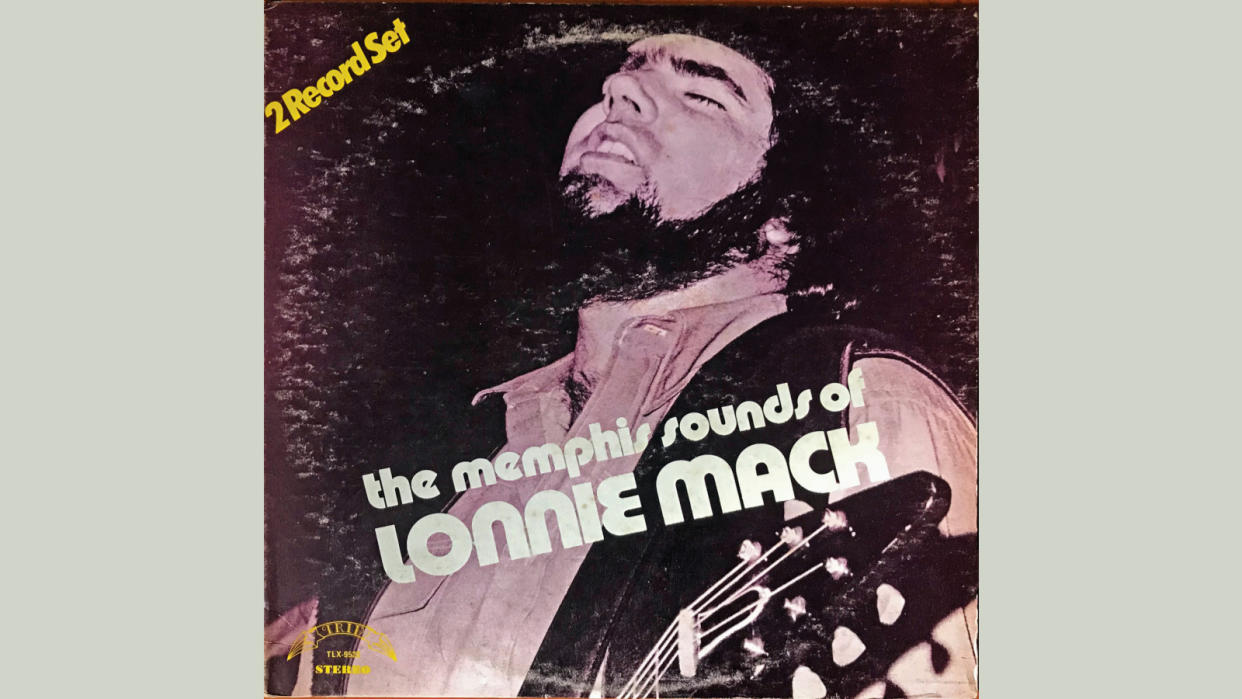On ‘The Memphis Sounds,’ Lonnie Mack Shreds and Displays a Virtuosity That Could Humble Blues Breaker-Era Eric Clapton

- Oops!Something went wrong.Please try again later.
On my 14th birthday, my sister Kathy took me to Tower Records San Francisco, on Columbus and Bay, and said I could buy any one record. I’d never seen or imagined a record store like Tower, and my 14-year-old brain was overwhelmed.
It took a couple of hours before I chose The Memphis Sounds of Lonnie Mack, on Trip Records.
I have no recollection why, out of 100,000 LPs, I specifically chose Lonnie Mack, but I was no dummy. It was a double LP.
I’ve always preferred 'The Memphis Sounds of Lonnie Mack' because it’s filled with instrumentals and rarities from his Fraternity Records years
Born Lonnie Macintosh in Harrison, Indiana, in 1941, Mack started playing guitar in his family’s country-based jam sessions when he was five or six.
The radio was his only connection to the outside world, and he forged a deep connection with black radio and gospel before discovering the music of Robert Johnson, Merle Travis and Les Paul.
Among Mack’s albums, the quintessential favorite is The Wham of That Memphis Man!, but I’ve always preferred The Memphis Sounds of Lonnie Mack because it’s filled with instrumentals and rarities from his Fraternity Records years.
It was there that Lonnie was a session player in the early 1960s and released his blues-rock instrumental hits “Memphis” and “Wham!” in 1963.
Lonnie’s first hit, “Memphis,” could be required listening for any bar-band virtuoso
Although “Wham!” is curiously absent from The Memphis Sounds, the set makes up for it in spades with many fantastic instrumental tracks.
During this 1963/’64 period, Lonnie showed the Ventures and Duane Eddy how to get your fingers dirty while adding a heaping tablespoon of soul.
My favorite track here is “Soul Express.” It features a hypnotic swing groove that alternates between double-time and straight-time while Lonnie shreds and displays a virtuosity that could possibly humble Blues Breaker-era Eric Clapton.
Lonnie’s first hit, “Memphis,” could be required listening for any bar-band virtuoso.
“Wildwood Flower” is distinctive and raunchy, yet it acknowledges the song’s most famous interpreters, the Carter Family.
“Sticks and Stones” is classic Lonnie Mack, combining a dressed-in-black gunslinger attitude accompanied by a rocking gospel arrangement.
“One Mint Julep,” another standout, features one of the greatest vibrato sounds I’ve ever heard.
There’s a break in the action with “Men at Play,” where Lonnie demonstrates his blues/swing chops.
All the while, his Gibson Flying V – strung with Gibson 340 strings (.013–.056) and played through a Magnatone 460 amplifier – sounds truly iconic, wonderful and perfect.
I was lucky enough to see Lonnie Mack perform in the 1980s, and his sound and gear had remained the same since his beginnings. It was a time-capsule performance.
It was also the loudest show I’ve attended in my life. Lonnie’s two Magnatone amplifiers made Ted Nugent and his four Super Twins seem kinda puny.
Lonnie Mack is required listening for any guitarist interested in guitar-based instrumentals with a gunslinger’s attitude.
If Ray Charles played a screaming, vibrato-laden Flying V, he’d be Lonnie Mack.

